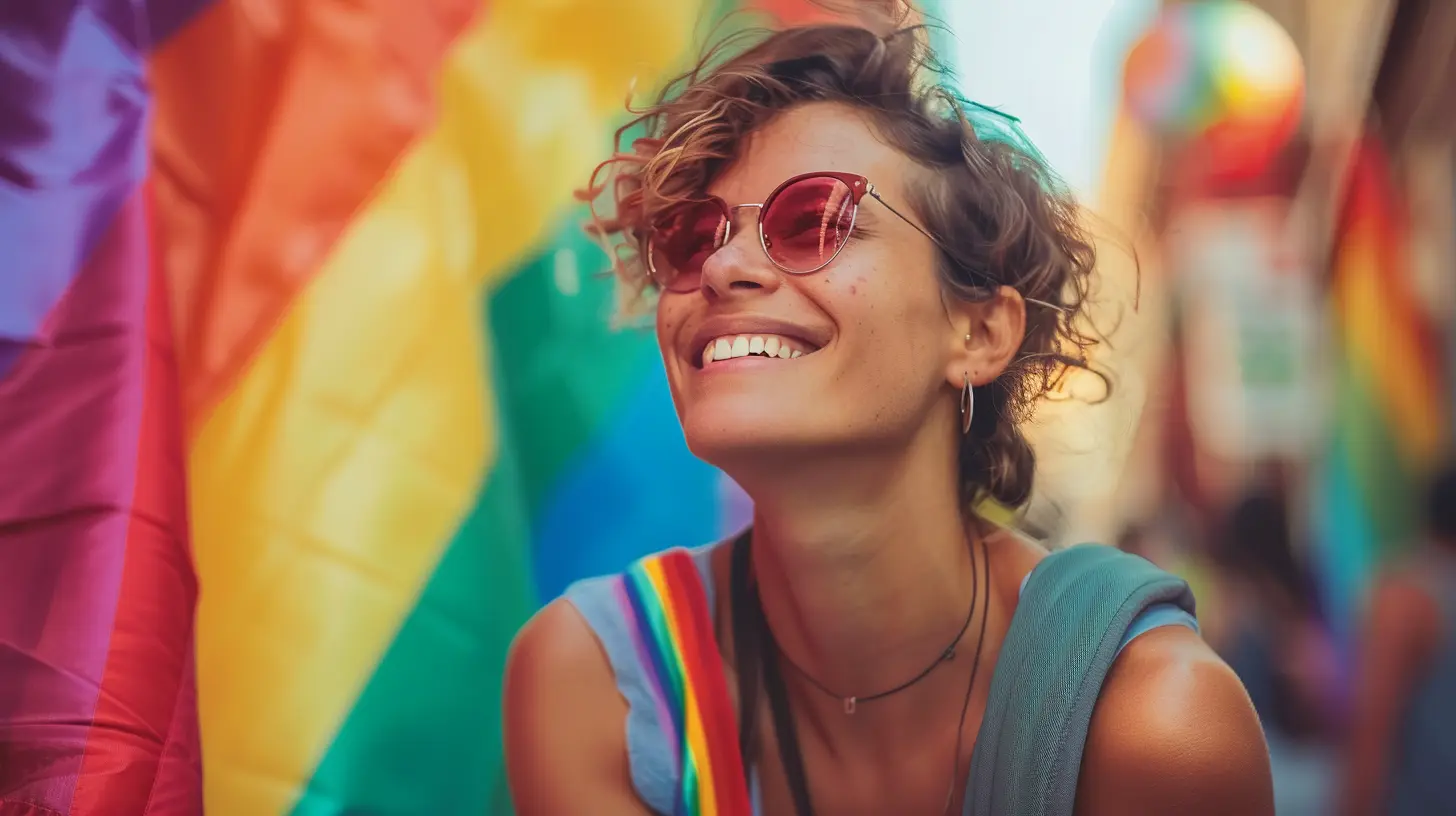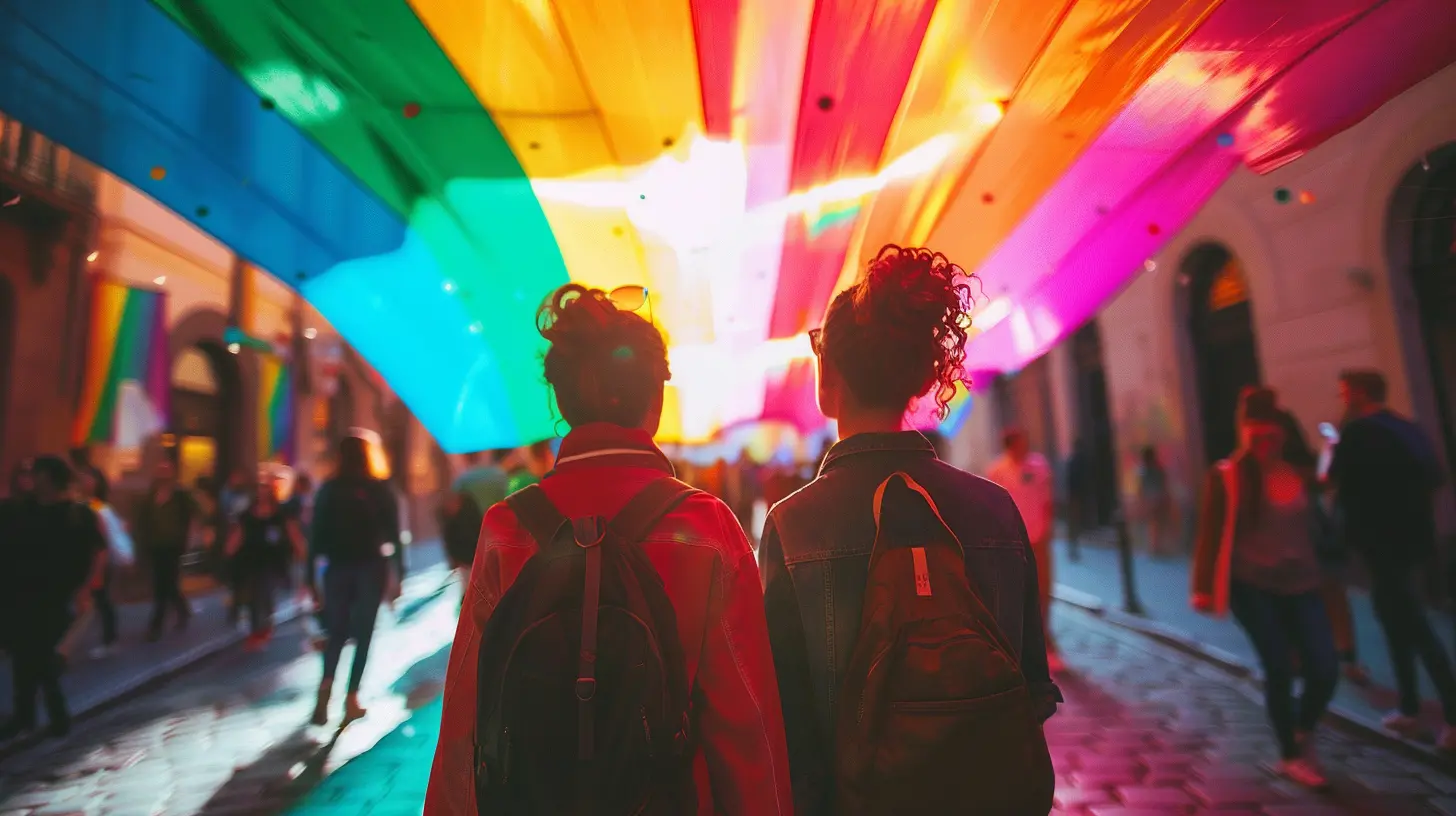15 April 2025
Traveling is one of life’s greatest adventures—new places, new cultures, and incredible memories waiting to be made. But for LGBTQ+ travelers, safety is an essential part of the journey. While the world has become more accepting in many ways, there are still places where being open about who you are can pose challenges.
So, how can you stay safe while enjoying all the amazing experiences travel has to offer? This guide will walk you through the best practices for LGBTQ+ travel, helping you navigate different destinations with confidence and ease. 
1. Research Your Destination Thoroughly
Before you book that flight or pack your bags, do some research on your destination’s attitude toward LGBTQ+ individuals. While some places are incredibly welcoming, others have laws or cultural norms that could make it a risky environment.How to Research Safely
- Check laws and regulations – Some countries criminalize same-sex relationships, while others have active anti-LGBTQ+ policies. Websites like Equaldex or the U.S. State Department’s travel advisories can provide up-to-date information.- Read traveler reviews – LGBTQ+ travel forums, blogs, and social media groups can give insight into real-life experiences.
- Look for LGBTQ+ friendly accommodations – Some hotels and resorts are openly inclusive and cater specifically to LGBTQ+ travelers.
Tip: If a country has harsh anti-LGBTQ+ laws, you may want to reconsider visiting or take extra precautions to protect yourself. 
2. Know Your Rights as a Traveler
Your rights change depending on where you are. In some countries, LGBTQ+ protections are strong, while in others, your rights may be severely limited.What You Should Know
- Legal protections vary – In some places, you can report discrimination and expect authorities to help, but in others, you could face legal consequences for simply being yourself.- Airport security screening – Some countries have invasive security procedures that may be uncomfortable for LGBTQ+ travelers, especially transgender individuals. If you're traveling with a gender marker that doesn’t match your appearance, be prepared for questioning.
- Embassy assistance – If you run into trouble, your home country’s embassy may be able to help, but their power is limited. Always check what kind of assistance they can offer in advance.
Tip: Carry a digital or printed copy of travel advisories related to LGBTQ+ rights in your destination, just in case you need a quick reference. 
3. Be Cautious with Public Displays of Affection (PDA)
While holding hands or sharing a quick kiss may be perfectly normal in your home country, it’s not always safe in other parts of the world. In some places, even a seemingly innocent gesture could lead to negative attention or legal trouble.When to Be Extra Cautious
- Countries with anti-LGBTQ+ laws – Even if laws aren’t strictly enforced, local attitudes can vary widely.- Conservative cultures – Even in places where LGBTQ+ relationships are legal, cultural norms may still frown upon public affection.
- Crowded or unfamiliar areas – If you’re unsure about how people around you will react, it’s best to err on the side of caution.
Tip: If you want to avoid unwanted attention, observe how locals interact in public before engaging in any PDA. 
4. Use LGBTQ+ Friendly Travel Services
Planning your trip with LGBTQ+ friendly businesses can make a world of difference. From booking flights to choosing accommodations, there are plenty of services that cater to LGBTQ+ travelers.Where to Look
- LGBTQ+ travel agencies – Companies like Out Adventures or Orbitz’s LGBTQ+ travel section can help plan safe and inclusive trips.- Inclusive hotels and resorts – Websites like Misterb&b offer accommodations specifically for LGBTQ+ travelers.
- Pride-friendly airlines – Some airlines, such as Delta and Virgin Atlantic, have been praised for their inclusivity and policies.
Tip: Many LGBTQ+-friendly services also support local queer communities, so your travel dollars can help create change!
5. Stay Discreet with Online Presence
In an era of social media and digital footprints, it's essential to be mindful of what personal information you share while traveling. Unfortunately, hostile authorities or individuals may monitor online activity.How to Protect Yourself Online
- Avoid revealing your identity in unsafe locations – If traveling to a country with strict anti-LGBTQ+ laws, consider using a different name or keeping your social media private.- Use a VPN – A virtual private network (VPN) can help keep your online activity secure, especially if you're in a country that monitors internet use.
- Be mindful of dating apps – Apps like Grindr and Tinder can be great for meeting people, but in some places, they can be used to entrap LGBTQ+ individuals. Avoid meeting strangers in private locations or use platforms that offer safety features like location masking.
Tip: Before traveling, turn off location tracking on apps and review privacy settings for extra security.
6. Have a Backup Plan
While we all hope for smooth travels, it’s always best to have a safety plan in case things go sideways.Essential Preparations
- Share your itinerary – Let a trusted friend or family member know your travel plans, including where you're staying and your expected check-ins.- Know emergency numbers – Research the local emergency contacts and keep them saved in your phone.
- Keep important documents secure – Have both digital and physical copies of your passport, visa, and identification in case of emergencies.
Tip: Consider registering with your country’s embassy before traveling to a high-risk destination for added security.
7. Connect with the Local LGBTQ+ Community
One of the best ways to stay informed and feel more comfortable in a new destination is to connect with local LGBTQ+ communities.How to Find LGBTQ+ Friendly Spaces
- LGBTQ+ community centers – Many major cities have dedicated spaces where you can meet like-minded people.- Pride events and safe bars – If your destination has an LGBTQ+ scene, check out local events or bars where you can meet people safely.
- Social media groups – Facebook groups, Reddit threads, and Instagram pages can be great resources for meeting locals and finding safe spaces.
Tip: If you’re unsure about the safety of an LGBTQ+ venue, check online reviews or ask other travelers before going.
8. Be Aware of Cultural Norms
In many places, LGBTQ+ travelers may be treated differently based on the cultural context. Understanding these norms can help you navigate interactions safely.How to Stay Aware
- Dress appropriately – In conservative areas, dressing in a way that blends with local fashion might help avoid unwanted attention.- Adapt your behavior if necessary – While you shouldn’t have to hide who you are, adjusting your behavior slightly in certain situations might help prevent uncomfortable encounters.
- Respect local customs – Being aware of local etiquette ensures you don’t unintentionally offend anyone or draw negative attention.
Tip: When in doubt, ask local LGBTQ+ individuals for advice on how to navigate cultural expectations.
Final Thoughts
Traveling as an LGBTQ+ person can be an enriching and life-changing experience, but staying safe is key. By doing your research, taking precautions, and being mindful of your surroundings, you can explore the world with confidence.The most important thing? Trust your instincts. If something doesn’t feel right, listen to your gut. The world is full of incredible places waiting to be discovered—so travel smart, travel safe, and enjoy every moment!




Diesel Gomez
Embrace the journey with confidence! Prioritize safety, connect with friendly communities, and let love and adventure guide your travels. Happy exploring!
April 19, 2025 at 2:58 AM